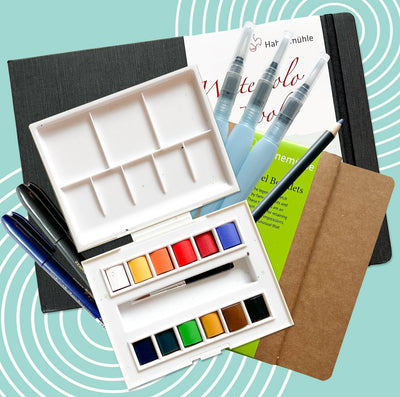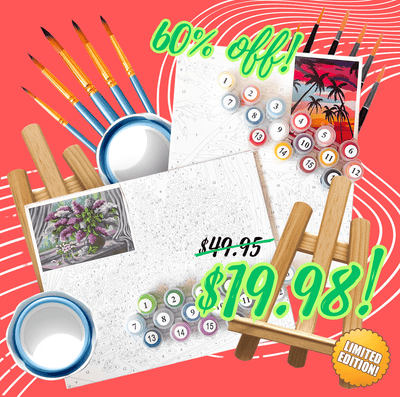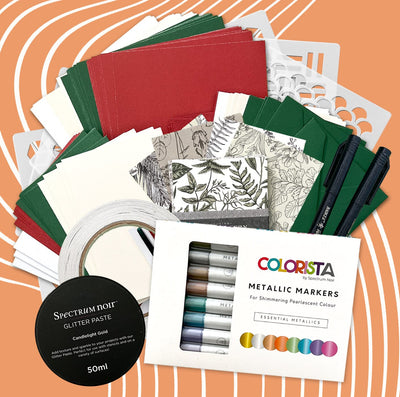Happy March Muse Kits Friends!
Are you interested in woodcarving but don't know where to start? Learning woodcarving can be really fun! You get to take a plain piece of wood and transform it into something amazing. Whether you like detailed carvings or simple whittling, woodcarving has something for everyone to enjoy.
Get ready to unleash your inner artist with this month's box! Inside, you'll discover everything you need to dive into the world of woodcarving. From premium balsa wood and precision carving tools to vibrant paints, rich wood stains, and a glossy glaze, we've curated the ultimate kit to ignite your creativity. Don't wait any longer—grab your March woodcarving kit and let your imagination soar!
Here are a few essential tips to help you get started on your Woodcarving Adventure:
Choose the Right Wood
Selecting the appropriate type of wood is crucial for a successful woodcarving project. Opt for softer woods like basswood, pine, or butternut for easier carving, especially as a beginner. These woods are more forgiving and easier to work with compared to hardwoods.
You’ll find balsa wood in an assortment of sizes inside this month’s Muse Kit!

Start with Basic Tools
While you don't need a vast array of tools to begin woodcarving, having a few basics is essential. Start with a basic set including a carving knife, a gouge, and a chisel. Quality tools will not only make your carving experience more enjoyable but also ensure safer and more precise cuts.
We’ve got you covered with 5 starter tools, each useful for different techniques!

Practice Safety First
Woodcarving involves sharp tools, so it's crucial to prioritize safety. Always carve away from yourself, keep your tools sharp to prevent slips, and use a carving glove to protect your non-dominant hand. Additionally, make sure your workspace is well-lit and clutter-free to avoid accidents.
Be sure to use the carving finger gloves included in your kit!

Start Simple
As a beginner, it's tempting to dive into complex projects right away. However, it's best to start with simple designs and gradually work your way up to more intricate carvings as you gain confidence and skill.
Begin with basic shapes and gradually add detail as you become more comfortable with the tools and techniques. Follow the included project guides for inspiration and tips along the way!
Learn from Others
Take advantage of the wealth of resources available for aspiring woodcarvers. Joining a local woodcarving club or attending workshops can provide guidance and advice from experienced carvers.
Additionally, our instruction guides offer step-by-step guidance for honing your carving skills. You can also visit our YouTube channel for helpful tips!

Patience is Key
Woodcarving is a meticulous craft that requires patience and practice. Don't get discouraged if your first few attempts don't turn out as expected. Embrace mistakes as learning opportunities and keep refining your technique with each project.
This process takes time, rushing can lead to cutting off more than you want as well as slips that could cause nicks and cuts to occur.
The History of Woodcarving
Woodcarving is one of the oldest ways people have used to express themselves artistically. It has been around for thousands of years and has been practiced in many different cultures. It started as a simple way to make useful things out of wood but has become an important art form over time. In the beginning, people used basic tools like sharp stones to carve wood for tools, weapons, and other things they needed. As societies grew more advanced, woodcarving became more intricate and decorative, with people adding patterns and symbols to their carvings.
In ancient Egypt, woodcarving was important for religious ceremonies and burial practices. Fancy wooden coffins, statues, and furniture with detailed carvings were signs of wealth and importance. The skill of Egyptian woodworkers is evident in these items, showing their talent and creativity.
Similarly, in ancient China, woodcarving was a big part of building design, making furniture, and religious art. Intricate carvings decorated screens, doors, and panels in temples, palaces, and rich homes. This showed off the talent and style of Chinese artists.

In Europe during the Middle Ages, woodcarving became popular again because the Christian church supported the arts. Woodworkers made fancy pieces like altarpieces and sculptures for churches. These artworks often told stories from the Bible, helping people understand their faith.
During the Renaissance, woodcarving reached new heights with famous artists like Donatello and Michelangelo leading the way. They made woodcarving more detailed and lifelike, showing great skill. It was a time when woodcarving was used a lot in fancy furniture and decorations, showing off the best of art and craftsmanship.
In the 1700s and 1800s, woodcarving kept changing as people's tastes and technology changed. Factories started making a lot of furniture and decorations, so hand-carved wood items became less common. But some artists kept the tradition alive, using old methods and trying new ideas with wood.

Woodcarving in Modern Day
Today, woodcarving is still a lively and varied art form with many different styles and techniques. Skilled artisans still use old-fashioned hand tools, but now modern woodcarvers also use power tools and machines like CNC routers and lasers to do more complex work.
Modern woodcarvers find inspiration from all sorts of things like nature, myths, and different cultures. They create sculptures and other pieces that show the world we live in today. Whether they're using old ideas or trying new things, woodcarvers are always finding ways to keep this ancient art exciting and meaningful in today's world.

Remember, woodcarving is as much about the journey as it is about the finished product. Enjoy the process of turning your ideas into reality through woodcarving. With dedication, practice, and a passion for the craft, you'll soon be carving with confidence and creating beautiful works of art to be cherished for years to come.
Happy Carving!






